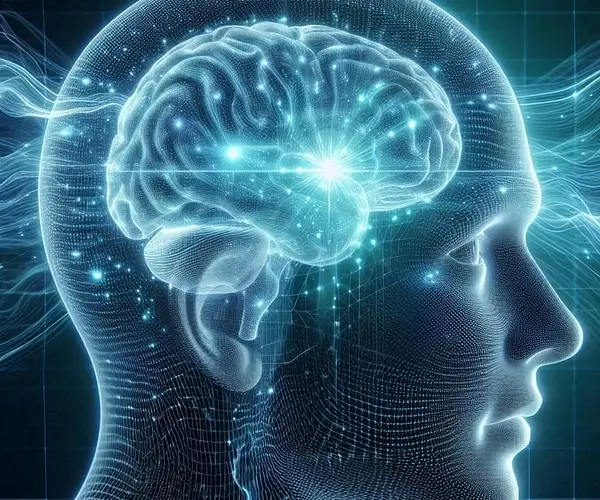Migraine and severe headache are highly prevalent among US adults, affecting about 1 in 6 Americans. However, not all populations affected have the same experiences and needs. Even the amount of research done regarding headache disorders differs from one population to another. For example, headache disorder research in transgender and gender-diverse populations is limited. The goal of current and future research is to learn more about the effects of the disorders and find proper treatments for them.
Gender has long been known to play a role in the pathophysiology of primary headache disorders. Migraine and tension-type headaches, for example, are more prevalent in women, while cluster headaches are more common in men. Hormonal alterations and their impact on brain physiology and pain response are thought to be linked to this discrepancy in occurrence. This association is supported by the research done on headache in transgender and gender-diverse patients; it was found that the prevalence of migraine increased in transgender women using estrogen and decreased in transgender men using testosterone.
However, each person responds differently to hormone therapy. Therefore, treatment for the headache disorder should be individualized and supportive of continuing gender-affirming hormone therapy.
In this article, we will dive into the different aspects that come with headache in transgender and gender-diverse patients.
How Common Are Headache Disorders in Transgender and Gender-Diverse Individuals?
Gender-diverse people make up between 0.1 to 2 percent of the population. There are an estimated 1.4 million transgender adults in the United States, but little is known about how commonly migraine and other headache disorders affect them.
A Dutch study found that transgender women who had recently undergone sex reassignment surgery and used anti-androgens to suppress male sex characteristics while using oestrogens to induce female sex characteristics had a migraine prevalence of 26%. This percentage is similar to the migraine prevalence in cisgender women in the same population. Cisgender refers to an individual whose personal identity and gender correspond with their birth sex.
Though there are no statistics on migraine prevalence before and after hormone therapy, an Italian study found that two of 47 transgender women had headache before using feminizing hormones. After hormone therapy, the number of transgender women reporting headache increased to five. In addition, ten of 26 transgender men had headache before hormone therapy. However, following treatment, six had a reduction in the severity and frequency of headache, while three reported onset of headache.
The Role of Hormones in Headache
Gender differences are evident in primary headache disorders. The most studied of these disorders is migraine. Migraine impacts one in five cisgender women and one in 15 cisgender men. It is more prevalent in women after puberty. However, a second peak may occur with perimenopause around the age of 40. This prevalence is thought to be linked to hormones and hormonal changes.
The lower levels of testosterone and higher levels of estrogen in women seem to be associated with the difference in headache prevalence between cisgender women and men. Falling estrogen levels are thought to be associated with migraine without aura, while high levels are linked with migraine aura.
Migraine is common during menstruation, with up to 20% of women experiencing migraine exclusively during this period. Women with migraine appear to have a quicker drop in estrogen levels in the late luteal phase of the menstrual cycle, triggering migraine onset. Women during menopause could still suffer from migraine, but the migraine’s frequency often declines. In addition, the symptoms of migraine differ from gender to gender.
Tension-type headache (TTH), similar to migraine, is more common in women, but less is understood regarding this correlation. It is thought that the greater occurrence in women is due to hormonal factors, especially since the likelihood of a TTH rises during hormonal fluctuations, as with menses. In addition, unlike migraine and TTH, cluster headache has long been known to occur more frequently in men. However, studies have suggested that the frequency of cluster headache in women has increased over time.
With all this information at hand, it is expected that hormone therapy will have an impact on migraine in transgender people. Despite the data being extremely limited, the use of estrogen in transgender women has been shown to aggravate pain conditions, such as headaches.
It has been found that any shift in hormones, whether an increase or a decrease, may impact migraine. As mentioned earlier, transgender women on anti-androgens for male sex characteristic suppression and a high dose of estrogens to induce female sex characteristics have an increased prevalence of migraine. Particularly, the prevalence of migraine with aura increases, especially in those taking high doses of oral estrogen.
Animal studies have seen that oestrogen in high doses potentially stimulates increased responses in the trigeminovascular system, a mechanism that could be involved in the headache phase of migraine. In addition, oestrogen raises the risk of cortical spreading depression, which is the pathophysiological process underlying migraine aura. Clinically, this may correlate with the increased prevalence of aura in transgender women taking high-dose oestrogen therapy.

As for testosterone, there isn’t enough evidence to tell if it is a migraine trigger in individuals. However, changes in testosterone levels may impact the frequency of migraine attacks. Studies have found that some testosterone-treated people had fewer attacks. In addition, a small case series found that after establishing testosterone therapy, transmasculine youth with postural orthostatic tachycardia syndrome and related headache had both conditions resolved.
In transmasculine youth, suppressing endogenous estrogen with lynestrenol, a progestin medication, resulted in headache during the first six months but not after. This may be explained by the estrogen withdrawal effect in the population.
The impact of transition surgeries on migraine is not well researched. However, similar procedures can provide insight into their possible effects. Hysterectomies and oophorectomies, or the removal of the uterus and ovaries, in cisgender patients have been linked to an increase in the incidence of migraine attacks right after surgeries. If a sudden estrogen drop occurs due to the ovaries being removed, more attacks may occur due to the hormonal decline. However, in terms of causing migraine, the actual surgeries are not a big concern.
Headache Diagnosis and Treatment
Correctly diagnosing headaches in transgender and gender-diverse individuals is critical for ensuring proper headache management. If new-onset headache occurs, secondary causes need to be carefully evaluated. As headaches are not mutually exclusive, each type of headache should get its own separate diagnosis. There are validated diagnostic screening tools that can be used to diagnose headache conditions, such as migraine. Often, diagnosing aura tends to be more difficult, but its correct diagnosis is vital since it is a marker for people at increased risk of ischaemic stroke.
Managing migraine in transgender and gender-diverse patients doesn’t differ much from managing migraine in cisgender patients. If migraine does occur in transgender and gender-diverse patients, it should be managed based on national guidelines while taking into consideration the impact of hormone therapy.
Transgender and gender-diverse patients with migraine should be provided with individualized treatment plans. The treatment strategy should be tailored to fit each patient’s unique needs. Transgender headache sufferers should not have to choose between continuing hormone therapy and managing their symptoms. Instead, the treatment should be supportive of any intervention the individual wants.
In this population, the treatment for headaches should help reduce the severity and frequency of attacks while receiving gender-affirming hormone therapy (GAHT) or undergoing surgical interventions. Regarding the hormone treatment itself, stable oestrogen levels in transgender women are best attained using non-oral modes of oestradiol delivery, which are less likely to provoke migraine than oral forms. The treatment should begin with modest dosages that are gradually increased. If aura occurs, there should be a reduction in the dose of oestrogen, and oral oestrogens, if used, should be replaced with transdermal oestrogen if necessary. In transgender men, the possible benefits of testosterone might not be fully achieved without complete ovarian suppression.
While on hormone therapy, transgender and gender-diverse individuals can take migraine or other drugs to lessen the burden. However, some medications may interact with hormone therapy. That’s why it is critical to consider potential drug-drug interactions in transgender and gender-diverse individuals receiving GAHT or antiretroviral treatments (ARTs). Certain medications that might be avoided in certain patients’ transitions include beta-blockers. Any changes in medication or hormone therapy should be discussed with your doctor. More research is needed to understand further how to manage headache disorders in this patient population properly.
An Underserved Population
Despite the transgender and gender-diverse populations’ increased visibility and the mainstream media recently adopting a positive approach, they continue to face excessive discrimination and prejudice. That is largely why this population remains underserved.
Transgender and gender-diverse individuals with migraine face discrimination from two fronts. First, they live with migraine, an invisible disease that people often overlook. In addition, society is not always accepting or understanding of people who are transgender and gender diverse. These two factors combined leave patients unheard and underserved.
There is also a lack of data and research available to help guide healthcare providers. This research limitation has to do with the lack of funding for migraine research in general, even more so for migraine in the transgender and gender-diverse community.
It’s important for transgender and gender-diverse individuals to find healthcare providers they are comfortable with. Every patient’s migraine is unique, so choosing the right doctor is critical for obtaining an accurate diagnosis and a treatment plan that is effective for the patient.
Final Thoughts
Primary headache disorders are known to be influenced by gender. Research has found that in transgender women using estrogen, the prevalence of migraine increases and reduces in transgender men using testosterone.
Hormones play a role in headache disorders. The lower levels of testosterone and higher levels of estrogen in women seem to be associated with the difference in headache prevalence between cisgender men and women. In addition, falling estrogen levels are linked with migraine without aura, while high levels are linked with migraine aura. Though migraine research in the transgender and gender diverse population is limited, it has been shown that hormone therapy has an impact on some headache disorders such as migraine.
An accurate diagnosis of the condition is critical for ensuring proper headache management. Treatment plans should be individualized based on each patient’s unique needs. However, unfortunately, the transgender and gender-diverse population are underserved. More research is required concerning headache disorders in this population.


